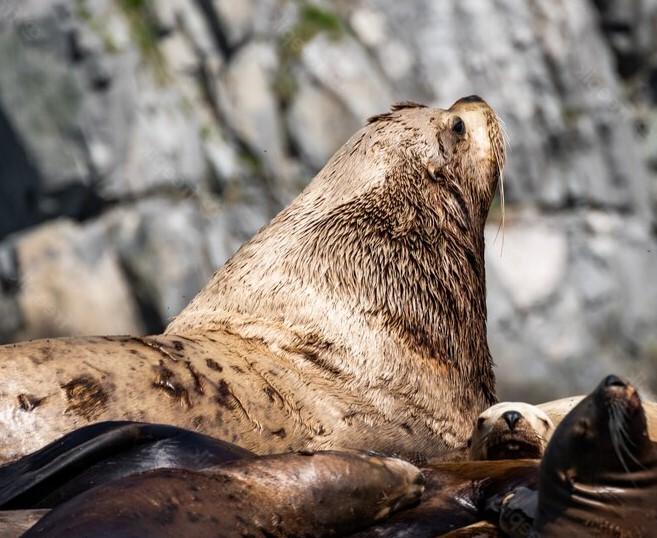
The hoarse roar of the sea lion male
Animals can cause noise pollution with their barking, roaring or screeching. On the other hand, some animals are bothered by ‘our’ noise. Nesting birds for example. Measuring everything related to 'animal & sound' is one of the specialist fields of Richard Florentinus and Edwin Nieuwenhuizen. An interview about permissible barking time, lions roaring at helicopters and seagulls throwing stones.
It went on pretty much all night: the only sea lion male in Artis roaring at his harem at hurricane strength. Neighbours lay awake, so loud and disturbing was the hoarse roar. This led to complaints. "So we did acoustic research and explored different measures”, says Edwin. "A solution is not easy, because Artis is committed to optimising the animals' habitat. It should be as natural as possible. Eventually, Artis decided to transfer the sea lion male to a different zoo.”
Barking time
Dogs can also produce quite a bit of noise. A visit to a kennel or animal boarding facility can reverberate in your ears for a long time. "There are key figures for the noise levels of dogs for such animal enclosures," Richard explains. ”The issue is the volume and duration of the sound - the ‘barking time’. A variety of factors can come into play, including the type of outdoor enclosure, the pack size, and the size of the dogs. After all, smaller dogs have a different bark tone than larger ones. If you want to build a kennel, we can offer advice on how to keep noise levels within reason. Usually, this is based on putting all data into a mathematical model.” In some situations, local residents have lodged complaints, as in Edwin's Artis example. In that case, we take measurements.”
Grass-eating-sounds
In the above cases, the animals are the source of noise pollution. But it also happens that animal noises interfere with the measurements as such. “It doesn't even have to be loud to cause interference”, says Edwin. “At some point, a herd of cows was grazing about 25 metres from our measurement site. They were ripping the grass out of the ground, which ended up distorting our readings”. There is also a third category: animals that find 'our' noise disturbing. Edwin: “The impact of noise on flora and fauna is mainly measured in Environmental Impact Assessment projects (Milieu Effect Rapportages, MER). For example, we measure whether the noise of wind turbines is not too disturbing for nesting birds. Sometimes additional noise dampening measures must be taken, or it is necessary to compensate for the loss of natural values.”
You learn quite a bit when you talk to Richard and Edwin. For example, trumpeting elephants produce the highest volume, but this is not perceived as a nuisance. “And when an ambulance drives past Artis, the wolves howl along with the siren”, Richard says. “The lions start roaring when a helicopter flies over.” It makes both men's work extra interesting. However, animal behaviour can also present dangerous situations. For example, while taking a measurement on a rooftop, Edwin encountered a flock of seagulls. The birds apparently felt threatened and began pelting the intruder with stones. “Next time, I’ll be wearing a helmet”, says Edwin.

